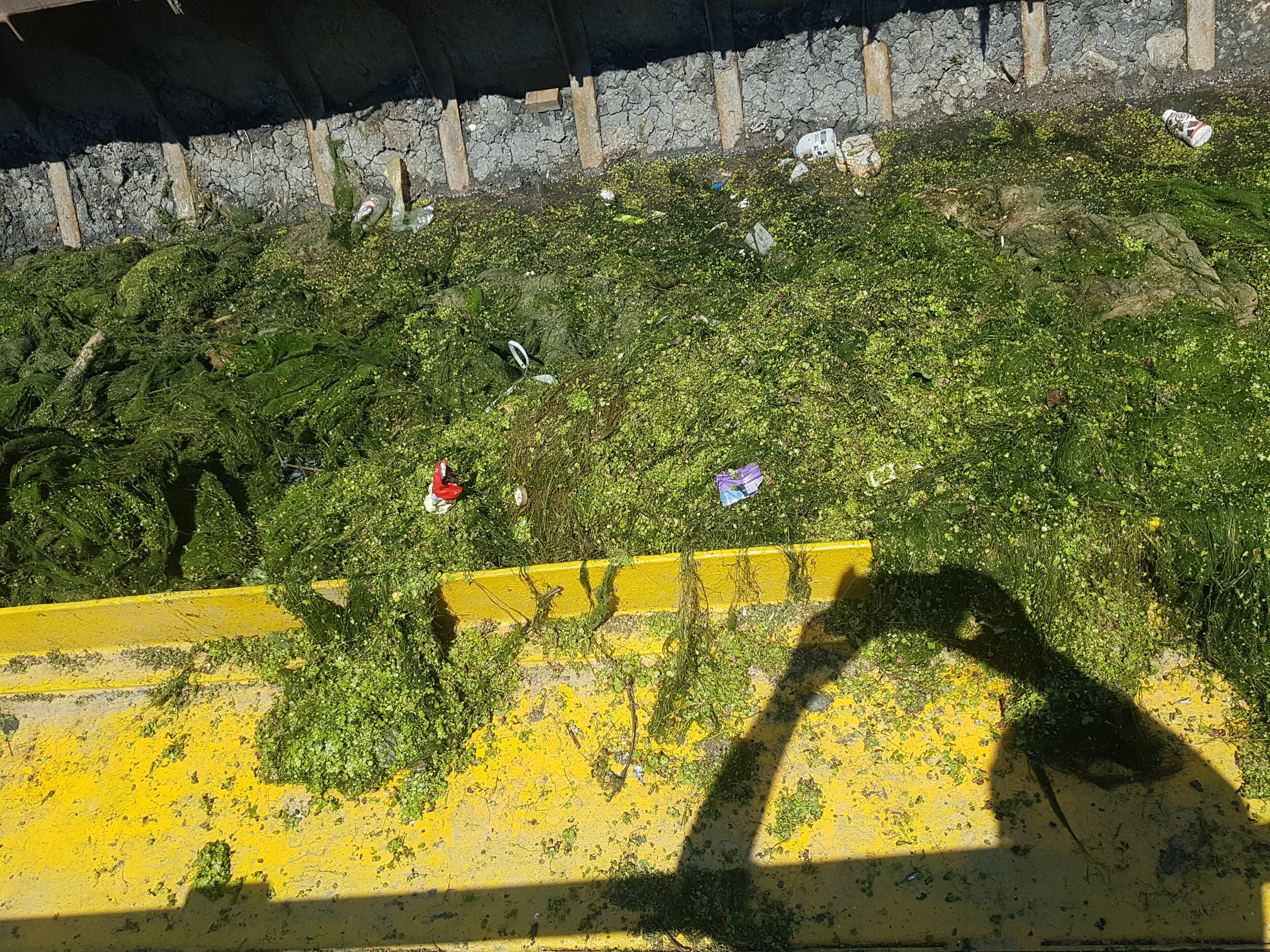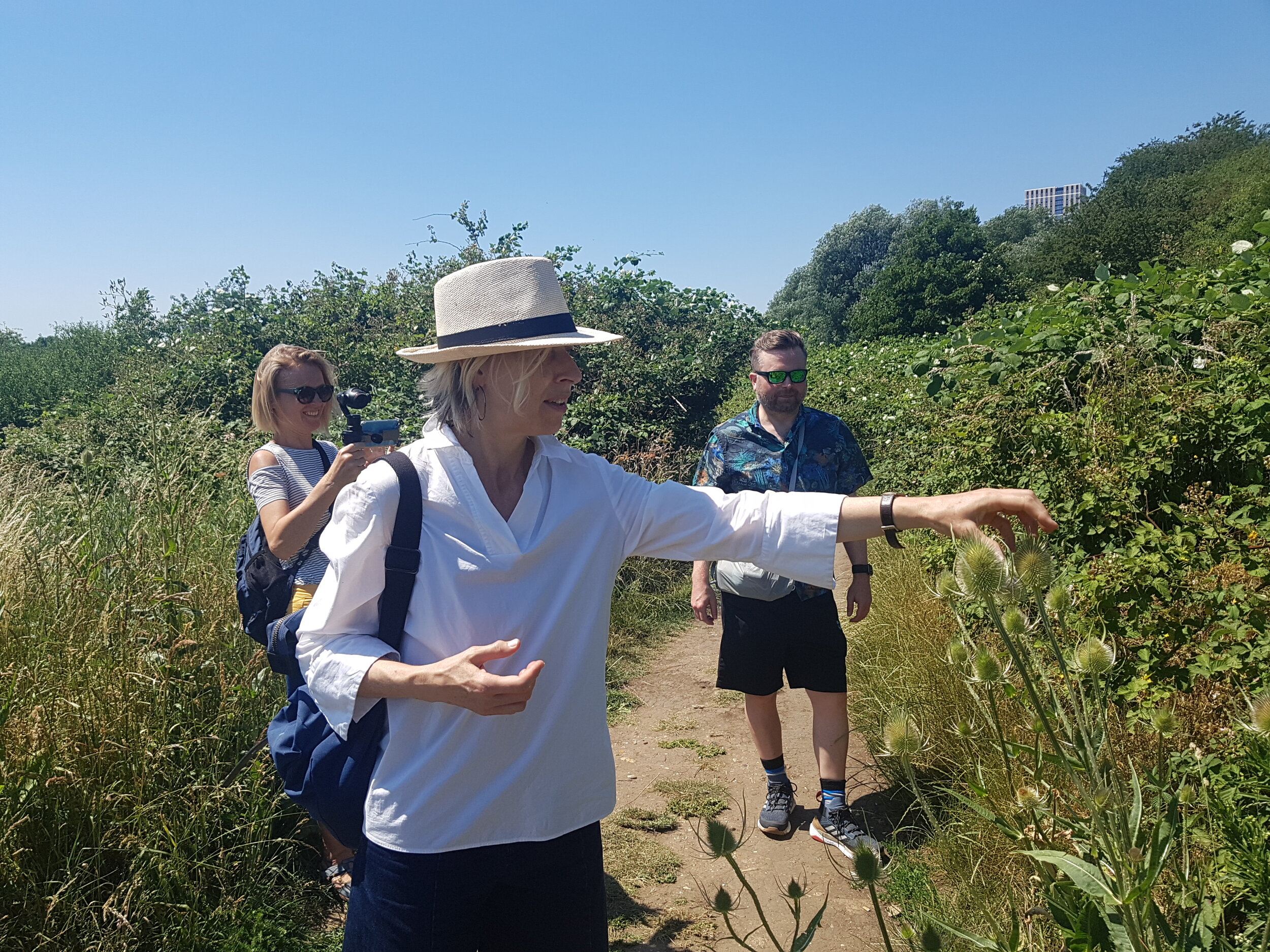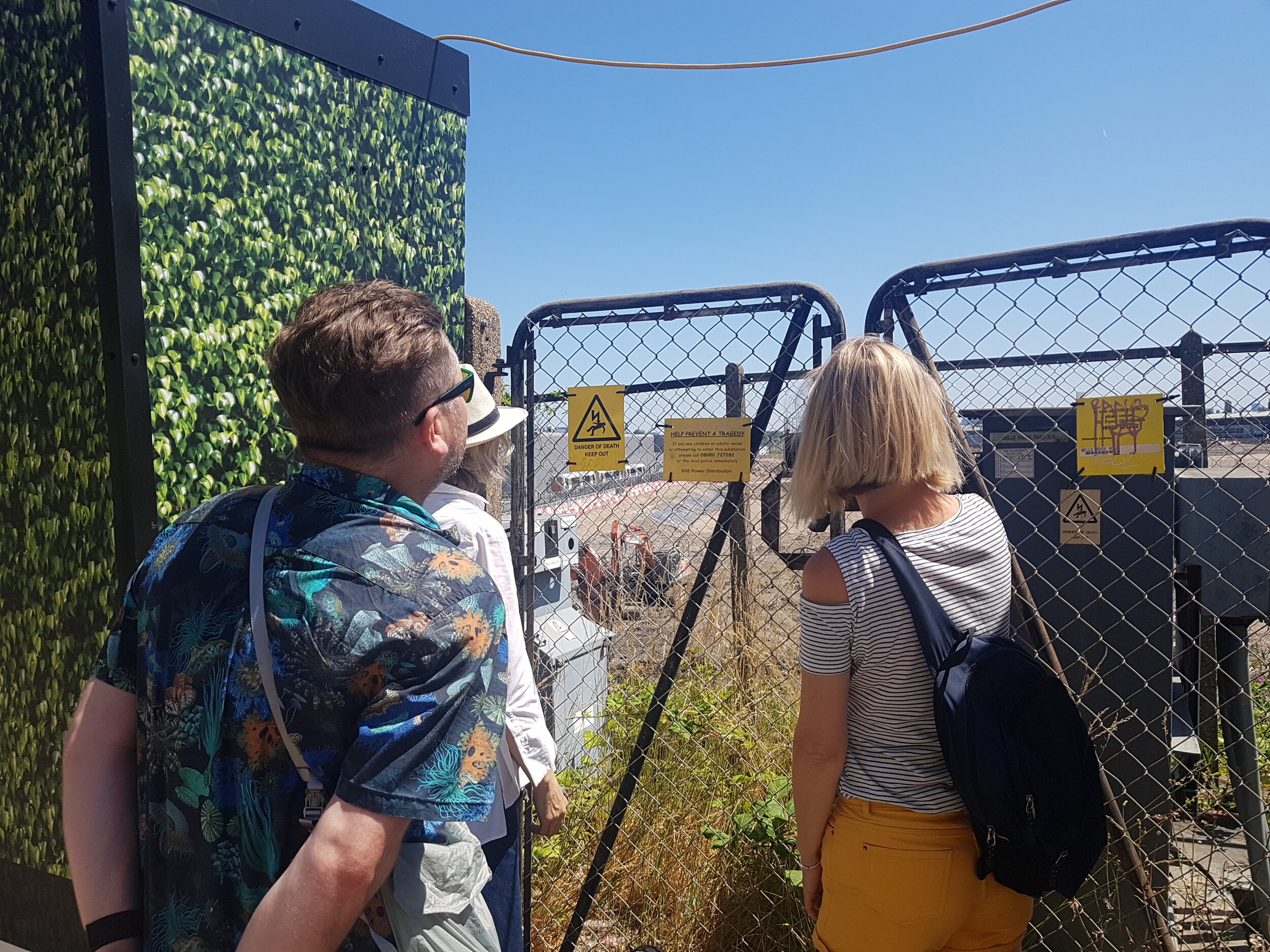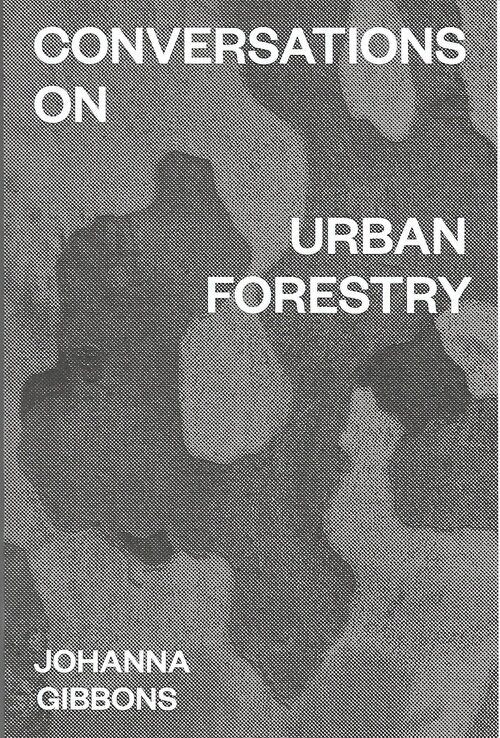Writer in residence at J&L Gibbons : landscape Architecture & Urban Design practice
I’ve been poet-in-residence at the inspiring, energetic and committed landscape architects, J&L Gibbons, since June 2014. https://jlg-london.com/Steven-J-Fowler-Residency
For over thirty years, their work with local authorities, developers and community groups has been to envision and realise beautifully designed green infrastructure for the city of London and beyond. Working on everything from the Angel Building to the Barbican, from Walpole Park to Making Space in Dalston, their work is dynamic and fundamentally considerate, and has opened me up to world's of knowledge, and language, that has proven to be consistently engaging.
As part of the residency I’ve contributed to three publications - Below Ground, Shifting Ground and Conversations on Urban Forestry, with new suites of poems on Soil, Geology and Trees - as well as reading at The Garden Museum and Dalston Curve, and co-curating events at Kensal Green Cemetery. Amongst many other things.
Over the eight years we have worked together, I have built a wonderful friendship with Jo Gibbons and Neil Davidson, and their team. We meet occasionally and they lay out all their remarkable work for me, bringing me into their processes, their conceptual thinking, their pragmatic practise - their constant efforts to think laterally and liminally with the design and shape of the places we live. They are inspiring people - outgoing, passionate, tireless. Rarely do I meet people operating at such a high level of effect on the world around us who are never lost within a private professional culture or other personal motivation by the very demands of that work. Their website features a great deal of information about their https://jlg-london.com/Projects and https://jlg-london.com/Practice
Poem on canal for J&L Gibbons, Urban Mind and Canal trust July 3, 2022
The next chapter in my longstanding residency with the remarkable J&L Gibbons landscape architects. https://jlg-london.com/Steven-J-Fowler-Residency
A poem for their Urban Mind & the Canal & River Trust project, whom have recently developed an ambitious nation-wide citizen science project exploring the mental health benefits of spending time beside water. https://www.urbanmind.info/canal-and-river-trust-study
I have spent so much time exploring and walking the canals of England, doing the Grand union from London to Birmingham even. Magic to have this poem published and so well received as part of this research.
A note on : Filming Worm Wood with Stehlikova, Gibbons, Davidson June 26, 2020
Filming again, Tereza Stehlikova and I’s film about disappearing / terraformed West London, and its mysteries, continues to grow, this time in the glowing boil of a heatwave. We were joined with others for this day, which is a rarity. www.stevenjfowler.com/wormwood Introducing Tereza and Jo and Neil a few years ago led to some grand moments, most especially in Kensal Green Cemetery and The Garden Museum, so it was natural we would get together to film. We met at Willesden Junction, traced Scrubs Lane down past towering new high rise flats, named Notting Hill Genesis - the beginning of all things. The new development Oold Ooak continues to grow, ebbing over the west lands, clearing space, jutting up into skylines. No Trellick Towers in stone, just rows of glassy plastic flats coming together, built by workers who poured through the lockdown still labouring at risk. Thousands of new homes coming, the HS2 burrowing underneath. Haunts now becoming glossy magazines alive, stuffed full of more people where there is now nearly no one. But us. We joined Wormwood Scrubs at its most northwestern tip, the scrubland as persuasive, quiet, welcoming and atmospheric as ever, before coming back to the grand union canal to finish. It’s a route I must’ve walked 300 times or more. Never with my friends, capturing snippets of conversation, knowing one day the brief connections will be part of the greater whole Tereza and I have been building
Published : poems in Conversations on Urban Forestry by Jo Gibbons
December 18, 2019
I am extremely fortunate and happy to have another chapter in my longstanding residency with J&L Gibbons out into the world, three new poems about TREES in a new publication - Conversations on Urban Forestry by Johanna Gibbons. https://jlg-london.com/
My poems, like all those I’ve written for this residency over five years, are language heavy, abstract, gestural, as they aim to elucidate language itself as a barrier or tool between the ideas of hands on work like landscape architecture, like the planting of trees, like the knowledge of trees and their affect on urban environments. The poems aim to be points of reflection and mediation to bring about, to those attentive to them, renewed attention to the ideas that this volume expounds and promotes wonderfully. This book is like all of Jo Gibbons work - lucid, erudite, convincing and necessary.
Shifting Ground and Below Ground available online
Landscape Learn : Growth and Decay - part of Worm Wood at Kensal Green Cemetery - July 15th 2017
A dynamic public facing project from J&L Gibbons, Landscape Learn is an exciting venture that Ive been able to be involved with through my residency and tie into my time at Kensal Green Cemetery, with Tereza Stehlikova, with this event. A one day mix of cemetery tour via geology and lost rivers, to talks on the bones of the city, the urban mind, neuroscience, landscape architecture and finishing with a screening of a film I have small part in, made by Tereza. Tickets were sold to a group of nearly fifty and the day felt really communal and engaged, I met so many really interesting people, all of whom shared a complex and intensive interest in their city and its changing environment - often changing for the worst, as the discussion of the nearby Old Oak Common development seemed never too far from the discussions. It's inspiring for me to work with people such as Jo Gibbons and Neil Davidson, this is the kind of day that feeds into my work, takes it into new places, where it needs to be, always growing.
30 Year Anniversary Event and launching Shifting Ground, a publication - September 22nd 2016
A really wonderful night at Dalston Curve with all the friends, colleagues and members of J&L Gibbons, celebrating three decades of remarkable, innovative, mindful work in shaping the environment of London and beyond. Lovely to work towards this night, where I gave a small contribution with this collective, multivocal reading, through the Shifting Ground publication. A beautiful object, it combines articles, reflections, dialogues, celebrates the past through future work and enterprise, and fortunately for me, contains a suite of my poems.
The Big Tree Debate at the Garden Museum, London: June 11th 2015
An amazing privilege to publicly evidence my association with J&L Gibbons, I was very kindly asked to read a few poems amidst some wonderful, dynamic talks about Tree heritage and city planning and environment at the Garden Museum in Lambeth. It was a major event, absolutely full, and in the ex-church main hall of the museum. I has the chance to read briefly (which I was delighted to do, briefly) and speak alongside Jo and Tim O'Hare, and vitally, read the poems their work has inspired. It was the most appropriate environment for them, and once done I was able to do what I'd always prefer to do, just listen, and learn from the expertise on display, why people had come and filled out the hall. Brita von Schoenaich (Bradley-Hole Schoenaich), and Anne Jazulot (Trees and Design Action Group) spoke too, and the event was chaired by Evan Davis. More info here. I hope this is the first of many events where I share the stage with the people who have so kindly hosted me over the last year, and it only occurs to me in writing this it has been just over a year & a half since I began my conversations with them.
Dendrophily
The second sequence of poems written with some concentration during my residency, where I began with the underfoot, the below, with Soil, so my discussions with Jo & Neil and the team at J&L Gibbons led me to speculate on the above. Again the conversations sat around the work table in their offices in Islington produce not just ideas of language and form, but of whole approaches, of awarenesses. A necessarily complex methodology is central to their work, and from that I've drawn so much. Often it's a case of patience. The great passion Jo & the team have for the trees of London, and the expertise required to maintain their good health, for the wellbeing of us all, is extraordinary. More to come on this sequence but you can read the first poems here http://thegreenerinfrastructure.tumblr.com/ (The image below is taken from J&L Gibbons work at the Barbican centre)
dendrophily #2: rowan
You should look out for me coming up
WS Graham
those useless few aligned
the first to unearth the given air breathed
where an old barrier man made of worth
did not value that experience &
in counterbalance to the bidpedal, the tree
does not receive the leaders it deserves
aligned, they keep in the cuddle,
if you like it, you are seeing double
sinking three figured verge
the lying tree uproots & meets
the village middle ringed with tracks by pigs
the unnerving regularity of the tree
as a new ssense that public support show
paid for. lessons like birch for burning
oak for scatterings (all polished up)
seeder for clogging, a stroke for the airless
woman for pine, employed by the television
Soil
The first sequence of my residency, the mode of my writing in response to the concerns of Jo, Neil & the work of J&L Gibbons is becoming clear. Whereas perhaps, in the past, it has just been the worlds of language that these embedded writing experiences have exposed me to, and while that is also true here, it clearly far more about a mode of working that is coming through in the writing. They do not work statically, the very essence of their procedure is research, consideration - a width of concern, a sense of consequence, a mindfulness of outlying factors and a fully realised knowledge of permutation. Which is clearly very rare in the industry they work in. So when we sit down in the J&L Gibbons office, I am not receiving updates on projects, not just presented with materials and books to scan and read, but whole approaches to environment. So it feels natural my writing would then not just excavate the language of a very certain thing, but attempt to wield that language in a way that doubles back on itself, that winds and folds into multiple meanings that still maintain the beautiful technical edge of the language world but also have a direct message, a lament maybe.
The underfoot, the beneath, is so central to their work. That a city cannot live without it's soil, and we've forgotten that, we've plundered into an ignorance of what lies beneath us, and this will have disastrous consequences. I wrote seven poems, drawing from the complex and brilliant oeuvre of Allen Fisher, each responding to a layer of soil. You can read the full sequence here: http://thegreenerinfrastructure.tumblr.com/ What I did not expect was that these poems would end up in an exquisite pamphlet called Below Ground, full too with essays and information, and drawing on J&L Gibbons partner Tim O'Hare, whose work was also an inspiration for the poems.
A Horizon (topsoil)
Myst the gyst in toil and mystery
thought it was simply a riddle
Allen Fisher
the old institution of sediment constitution
is no longer viable < magnetic fields
miniature blackholes, more necessary sewage drilling
the Whole Earth Catalogue apologises
& like the First Primary Rus Chronicle
bound in skin as a necrocomicon, turns black
still surface enough to discern pity
to form low earth speculative astrophysics in clods
the worm fec bubble ghost puck
Reich’s “towards the earth” machine breaks
the Pesci hypothesis man < baseballbat
all might is ought without ground to think on
springbok of earth - hiding death no less
all magic body juices & profound turning of monkey
from solid to liquid, I await your harvest
The Residency begins: June 2014
In the current moment, the space a poet inhabits is without responsibility. That is in language, and whether or not the poet's response to their language world is powerful or flippant, derisive or optimistic, it is all predicated on a space of engagement with the reader which is entirely voluntary, & all the better for that. All the more room for me to seek out alternative spaces, to attach my practice, parasitically, to those creative few who inhabit the alternative, where they are tasked with shaping an environment where people have no choice but to be. A physical space that requires more than physical reckoning. A profound and humbling challenge it must be, to be faced with the responsibility of shaping space that people will inhabit, to need to be both wholly functional and eminently creative. To be mindful for the everyday in people's lives. So I'm beginning a residency with the remarkable landscape architects J &L Gibbons, and hope somehow, over the next year, to respond to their responsiveness, to somehow reflect the necessary complexity of their work, and the inspiring sensitivity and ethics they embody in their work.
We are all collectively responsible for our space, but there are those of us whose expertise puts them into moments of decision, in real three-dimensional praxis, and whose stake may not be immediate after they have left those environments but whose trace is essential to the feeling and experience of that place. In the urban context, where all, at some point, has been planned or shaped, even if accidentally, by the hands of money, so their role is a fascinating blend of immense power and fundamental invisibility, for the people who will use that space at least, once the architects are gone. This paradox is what attracts me so much to the work of J&L Gibbons and a progressive notion of landscape architecture. For I am, I must admit, quite frequently, unaware of the process of landscape, while being painfully aware of the evolution and environment of language in that very same space. So I believe this residency can be a symbiotic engagement on my part, learning to be mindful of this environmental evolution of the city, especially am ancient city like London, to see with new eyes through the work of Johanna Gibbons and Neil Davidson and their colleagues the changing of environments while tacitly recordings, archiving and reflecting on the language of that process, those spaces and the culture of its happening.
Like every profession or possession, familiarity breeds diminishing returns in the practitioners understanding of their own responsibility. The grind of unmediated human behaviour undoubtedly leads those who shape our environment to suffer the same prosaic reckoning as any other profession, just as a poet will write the same way for 40 years because he has found some recognition, so the unrewardable complexity of subtle, liminal, 'humane' approaches to the shaping of an environment seems a rare quality that would require great awareness, humility, passion, mindfulness and ethical self-interrogation. This is my meagre understanding is what defines the work of J & L Gibbons. In fact if I am now able to recognise different fundamental modes of landscape architecture, it is because of my being exposed to their extraordinary work. I had the privilege to speak in person with Johanna Gibbons and Neil Davidson at length about their work, where they fleshed out the content of this talk http://www.gardenmuseum.org.uk/page/grounds-for-optimism-designing-resilient-landscapes-in-london and (perhaps accidentally) exposed me to their remarkable humour, care, sensitivity and engagement with the very root of what they are doing. It so exciting to be in the presence of people at the height of their profession who have never allowed themselves to become lost in the necessary minutia of their task at the expense of the human experience, for all the complexity of that, that underrides their decisions.
I shan't now bring up individual examples of their working history, or their remarkable client list (though its worth looking it up http://www.jlg-london.com as it is all a matter of public record) as I want to save much of it for my work with them over the next year. Suffice to say, in beginning this residency, I am preparing myself for writing that brings with it a responsibility, and that is what I am seeking. Environments are shaped by language as much as anything else, though it hard to reckon, and over the next year I intend to improve my understanding of language in space, in the fundamental shaping of people's living space, and I hope, primarily to permanently refocus my own ability to perceive 3 dimensions and the human presence within then. I am in fine company to do so. http://www.jlg-london.com/


















